It’s that time of year again! Time to drag out the A/C refrigerant machine and get out your UV glasses. The summer heat puts modern vehicles to the test for keeping drivers comfortable. Climate control plays a critical role in keeping Audi drivers both comfortable and safe while operating their vehicles.
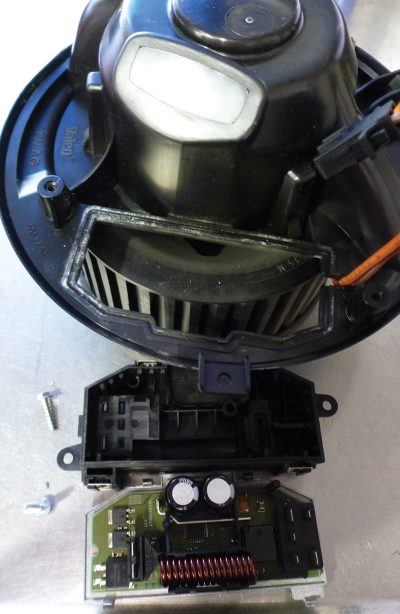
During colder months, the air conditioning may not be used for extended periods of time, either masking problems with the system or creating issues from lack of use. A vehicle without a proper air conditioning system can become a safety issue if left unchecked. Without a properly operating climate control system, driving in extremely humid or cold environments can fog up windows to the point of impairing visibility.
Climatronic
In most modern Audis, much of the climate control system is automatic and requires minimal input from occupants. And all Climatronic systems offer dual zone control for occupants. The functions are controlled from the Climatronic contol unit (J255), which is also the control head on Audi vehicles. The control unit is connected via CAN bus network to the rest of the vehicle via the gateway module (J533).
Most Climatronic sensors are also connected through a secondary LIN bus network. This is a single wire network that aids in communication and diagnosis of every connected vehicle component. Most modern vehicles have adapted to LIN bus networking for certain systems as it is simpler and less expensive than a fully connected CAN network.

LIN networks drawbacks include limited speed. This is why vehicle safety systems still rely on a CAN network connection. When a problem arises within a specific vehicle component connected to the LIN bus, the network can broadcast information to its master module. It will generally store faults to aid in diagnosis. For the climate control system, LIN bus is used primarily for blend door motors and the fresh air blower motor. Through scan software the module can by accessed via address 08.
Compressor: The A/C compressor plays a critical role in the climate control system. Its job is to pump the refrigerant at high pressure through the A/C system. Modern Audi vehicles employ a variable orifice compressor. Available on most every newer Audi model, the updated compressor increases efficiency and comfort and replaces the old school compressor clutch with a magnetic on/off design. The variable orifice compressor offers many advantages such as cooler temperatures, reduced compressor load on the engine, and improved fuel economy.
Instead of using a clutched pulley, modern Audi A/C compressors have a standard pulley with a built-in breakaway design. This is used to keep the compressor from completely locking up if it becomes damaged. This pulley design also dampens the compressor from engine forces. Often, a low or empty refrigerant level can cause pulley failure. The refrigerant and oil normally act as lubricants, keeping the inside of the compressor spinning smoothly. Without them, overheating of the internals may occur, causing extreme drag and eventual pulley failure.
If the compressor exhibits strange noises or customers complain of drive belt noise, it is wise to inspect the compressor pulley. Using a stethoscope is a good way to localize these strange noises and isolate them from accessories. Visual inspection is also possible but may be difficult without removing the dust cap on the front of the compressor. When the pulley has separated, bits of material may remain on the bearing surface, creating loud noise as it spins.
The n280 compressor regulator valve controls the internal pressure of the A/C compressor by regulating a solenoid valve internally and controlling flow. It is activated by the Climatronic control unit to meet cooling needs. The regulator valve is a key component of the compressor, acting similarly to the clutch in an old style A/C system by varying the flow of refrigerant into the system. It is constantly energized and gets lots of use. When failures happen at the compressor, it can usually be traced back to the regulator solenoid valve. This solenoid is very similar to a variable valve timing solenoid used to rapidly modulate oil pressure.
When testing the compressor regulator valve, keep in mind that it receives a PWM (Pulse Width Modulated) signal. It operates on a lower voltage (0–5 volts) than battery voltage. Do not test the compressor by power probing these units. Damage most likely will occur.
The safest diagnosis is to back probe the connector at the compressor and check for proper incoming signal voltage. Again, the most common failure point on these units is the valve itself in the compressor. The control valve is not serviceable and a new compressor assembly must be fitted if found to be faulty.
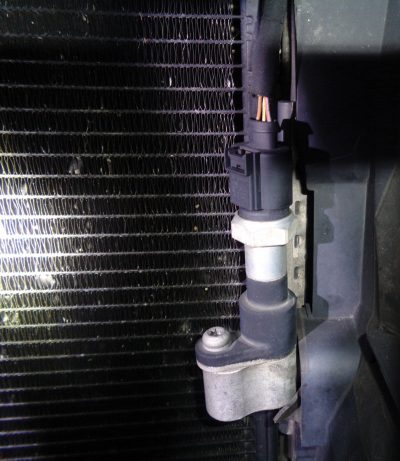
G395 Sensor Failure
The A/C pressure switch plays a critical role in the climate control system. Its job is to monitor the refrigerant pressure going into the evaporator assembly from the compressor. If this sensor detects a dangerously high refrigerant pressure or an implausible reading, it will disable the A/C compressor operation. The pressure sensor uses a pulse width modulated signal to the Climatronic control unit.
Even when diagnosing climate control performance, a scan of the vehicle is a mandatory step on Audi vehicles. The Climatronic stores faults, aiding in diagnosis of the system. The most common fault stored for the G395 sensor is 00819 high-pressure sensor (G395) lower limit exceeded, or implausible signal.
The G395 high-pressure sensor has become a common failure item on Audi models. This sensor often leaks refrigerant into the sender body, destroying the internal components. In extreme cases, refrigerant leaks externally through the sensor itself, depleting the refrigerant charge.
Electric Cooling Fans
The electric cooling fan is a necessary component of the climate control system. When the refrigerant is forced through the condenser at the front of the vehicle, the vapor is condensed into a liquid. This thermal reaction creates a lot of heat. When the vehicle is moving, air is naturally forced through the condenser where the refrigerant is cooled. In stop and go traffic, the electric fan is especially needed to pull air across the condenser. The electric fan helps dissipate the heat, which can otherwise increase engine coolant temperatures to unsafe levels if left unchecked.
As part of programming, if failure of the electric cooling fan or fan control module occurs or if refrigerant pressure is too high, the A/C system will be disabled. This ensures that the engine coolant level does not reach unsafe levels. It usually triggers a fault code to store in the control unit, aiding diagnosis. The fans report to the engine control unit, not the climate control unit, so faults are stored there. It is also possible to run activations on the electric fan to test for proper function. If the fan is bad, this limits the A/C system’s operation. The Climatronic control unit stores shut-off condition information that can directly identify faulty components.
Blower Motor
When diagnosing a complaint of poor HVAC system performance, always start with a scan of the vehicle’s systems after connecting a power supply. Faults are often stored in the climate control unit, leading to a quicker diagnosis of issues. If the blower motor is suspected of being faulty, the vehicle will store DTCs, such as 1273-fresh air blower, mechanical fault, static/sporadic. B10BE07-fresh air blower front-mechanical fault, may also be stored in the climate control unit
During blower motor diagnosis, it is important to physically inspect the motor itself for damage. Audi has taken great care to protect the blower motor; however damage does occur occasionally. If it is difficult to spin, noisy, or hitting the support cage surrounding the motor, it should be replaced.
If the car has ingested water through the fresh air intake, the blower motor takes the brunt of the damage. The water can quickly damage the electrical components as well as the bearing surface on which the motor rides, rendering the motor inoperable or increasing noise from the blower motor. This water damage can appear as a green corrosion buildup on connectors and the motor windings. If you must replace the blower motor due to water ingress, it is wise to replace the blower resistor at the same time, as both reside in the same area and may have been damaged/corroded as well.
Resistors: The blower motor requires a set of resistors to properly modulate speed and air output. It rarely fails, but, when it does, the symptoms are apparent. In vehicles with manual or automatic fan settings, one or more of the fan speeds may be inoperable. In certain cases, the blower may not operate at any speed at all. This is when a power probe comes in handy. It is possible to bypass the resistor and test the blower motor directly for operation.
If the blower only operates at the high-speed setting, it is likely the resistor has failed, requiring replacement. When the resistor has failed, the blower motor receives full 12 volt power. This is generally the high-speed setting on the control head. This allows limited blower function, aiding in safety for the driver. Replacing the resistor is normally a straightforward operation. After removal of the passenger side lower cover, the blower motor and resistor pack are visible and accessible for replacement and testing. Thanks to the work of Audi design engineers, few tools and little time are needed to get to this piece of the HVAC system.
Cabin Filter
To ensure the best interior comfort, Audi vehicles offer a cabin air filter on all vehicles. In addition to providing filtered air, they protect the blower motor and climate control system from outside contaminnts that can potentially damage components. Activated charcoal filters are also recommended, as they make a significant improvement in vehicle air quality as well as limiting noxious odors from entering the cabin.
Audi recommends replacement of the cabin filter at 20K mile intervals. This may decrease, depending on where the vehicle is parked. Cabin filters can become completely clogged with material if left unchecked for too long.
The cabin filter on most Audi models is located under the passenger side knee bar. Replacement can be done in minutes with only a lower cover to remove and a slide lock cover to access the filter. Be sure to clean up after replacing the filter; excess leaves and plant material usually fall out of the blower casing when the filter is removed.
Heater Core: When driving in cooler temperatures, it becomes necessary to heat the cabin air to more comfortable levels. This is done by using a heater core. The heater core transfers heat from engine coolant to the cabin of the vehicle. The climate control system utilizes the heater core to direct air across the core, warming it for the cabin.
Heater core problems are rare but do occur from time to time. The primary cause of clogged heater cores is lack of coolant changes. It may be difficult to find a factory interval for flushing coolant. Every two years is a wise recommendation, just like brake fluid.
Always use an Audi approved coolant with a 50/50 mix with distilled water. This ensures proper pH level and protection. The distilled water is also necessary to eliminate any minerals or sediment that may be in standard supplies. If neglected or topped up from leaks, the coolant may begin to accumulate a sandy sludgy texture in the cooling system if not changed frequently enough.
If the core becomes internally clogged with material or sediment, it cannot efficiently transfer heat to the outside of the core. This results in poor heat output, particularly at idle speeds when coolant flow is at its lowest. With poor heat output, particularly in colder climates, this can become a safety issue, creating ice buildup on windows and a cold driver! In dual zone climate systems, a clogged heater core sometimes affects only one side of the vehicle. This is due to the position and airflow across the core itself.
Using an infrared thermometer, it is possible to determine if the heater core is properly transferring heat. The inlet side should be approximately 20 degrees F warmer than the outlet. If both sides are the same temperature, the core is definitely clogged.
If a clogged heater core is suspected, it may be possible to back flush it to increase flow through the core, bringing back sufficient heater performance. It can increase coolant flow enough to increase heater output and allow for more thorough diagnosis of the HVAC system.
A heater core back flush is a relatively straightforward operation, needing just basic tools. Heater cores generally have one inlet and outlet for the coolant to flow through. The first step is to remove both hoses going to the core and re-attach two short sections of rubber hose or old coolant hose. This is used to feed and drain the core as it is flushed.
The primary tool for the flush is a standard blow gun with a pressure regulator inline. The regulator is necessary to lower air pressure to safe levels. If too much pressure is used, damage to the heater core can occur. Safe pressure is between 15–20 psi, no higher. Using a mild detergent may help break up deposits in the heater core, but be careful not to use anything too strong. Standard dish detergent works fine.
After soaking the core for 15 minutes, use the blow gun on the outlet side of the heater core. Rapid short bursts of air will force the remaining liquid through the core and out via the inlet of the core. The bursts of air pressure help break up deposits and increase flow. Do not use full shop air pressure. This will cause damage!
Repeat these steps if a lot of debris is seen exiting the core. Flow will be increased through the heater core after this procedure. This is not a sure fix and is usually only used to confirm a suspected clogged core, which must then be replaced.
Vehicle climate control systems are always changing to increase efficiency and comfort. This is why it’s important to stay up to date. These systems may seem quite complicated, but they still rely on basic principles. With a good general understanding of these systems, most issues that arise can be quickly diagnosed and repaired, keeping customers comfortable and happy.


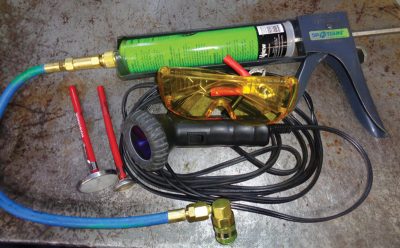
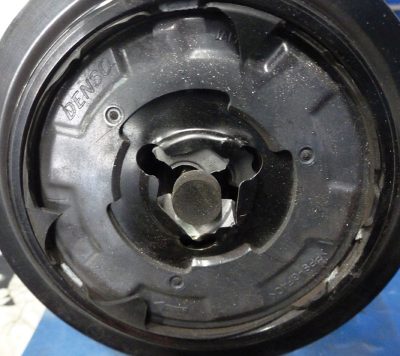
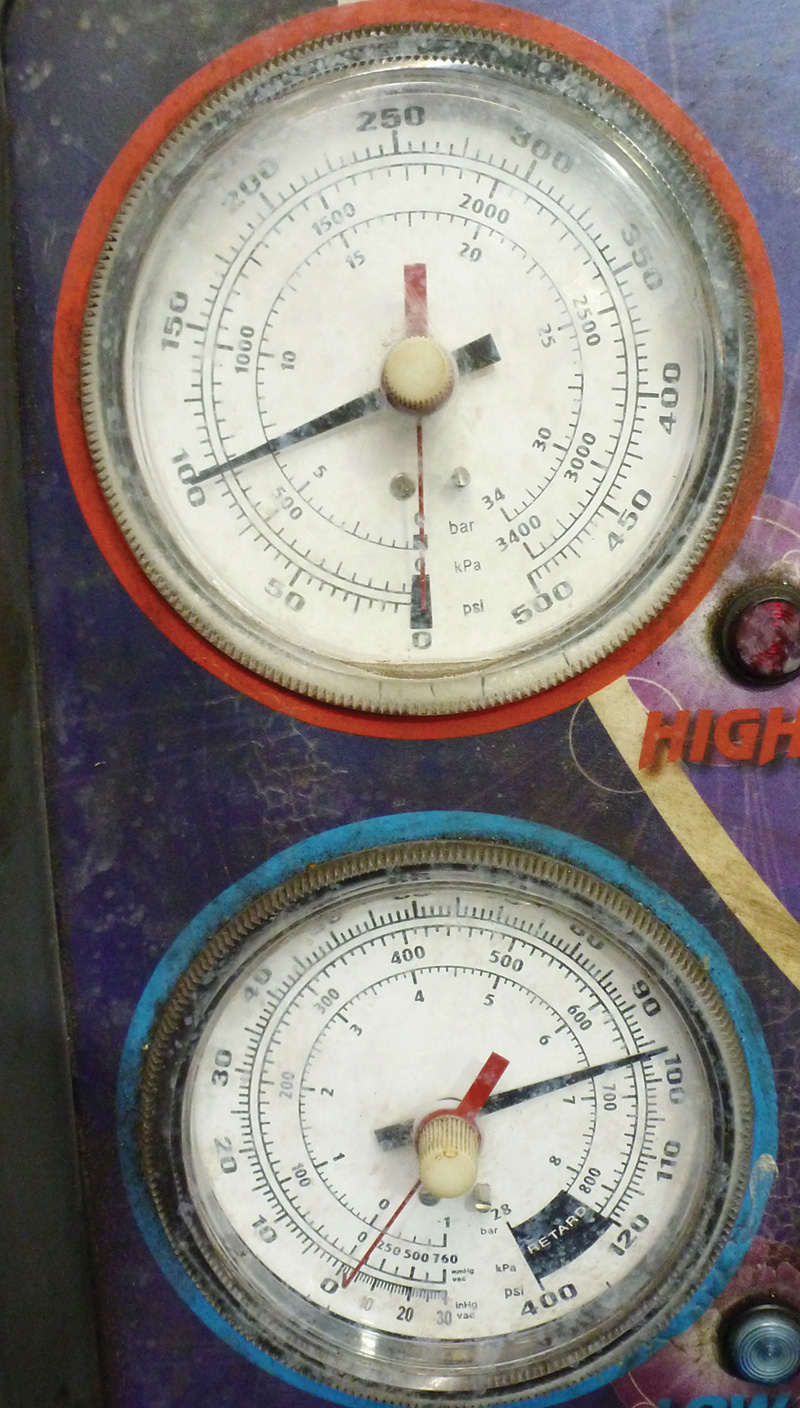
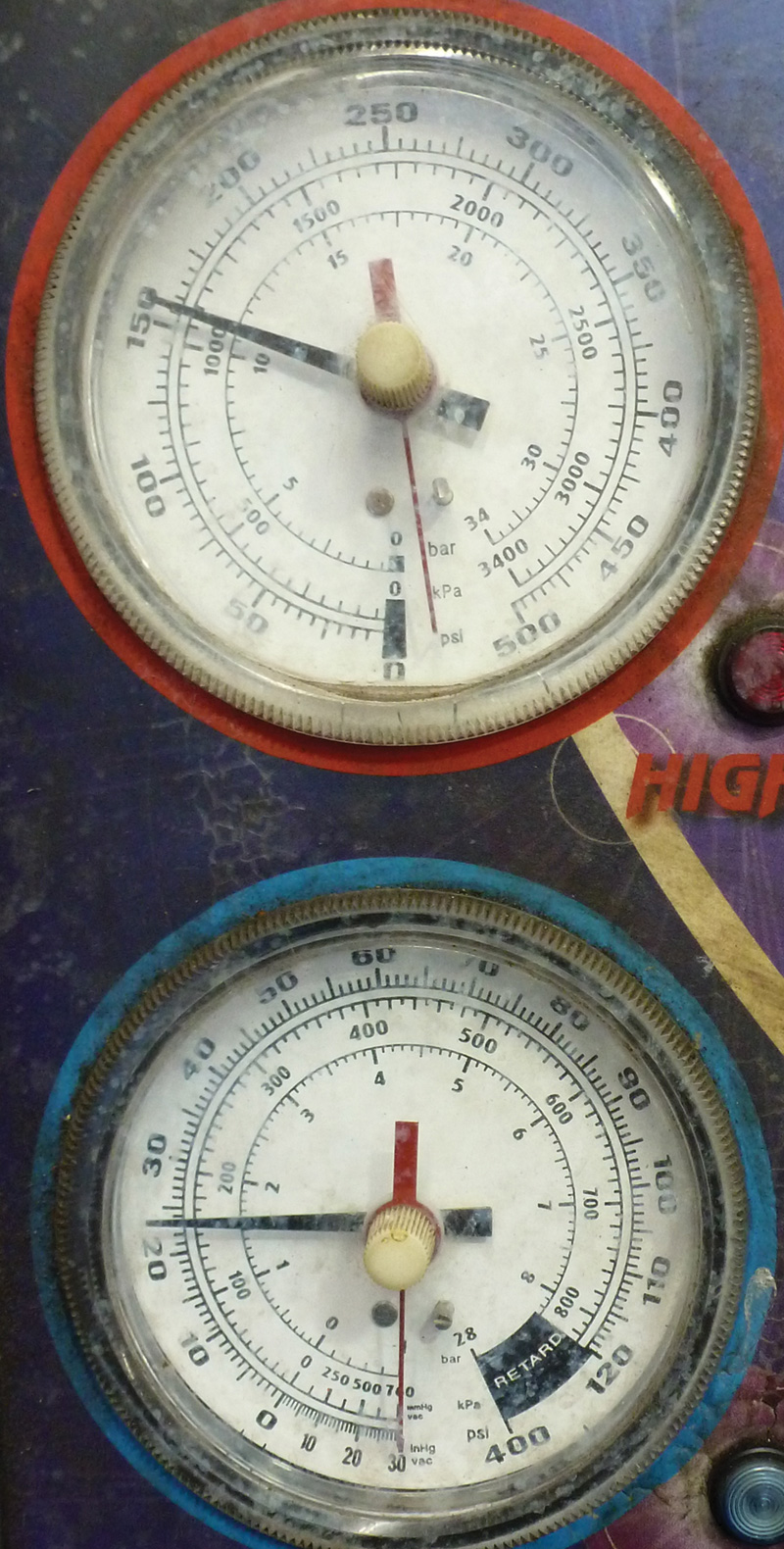

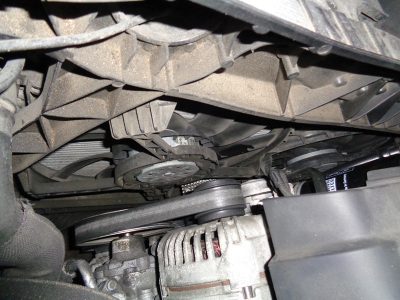
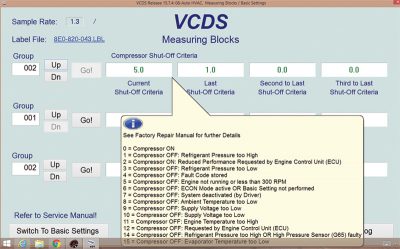




0 Comments